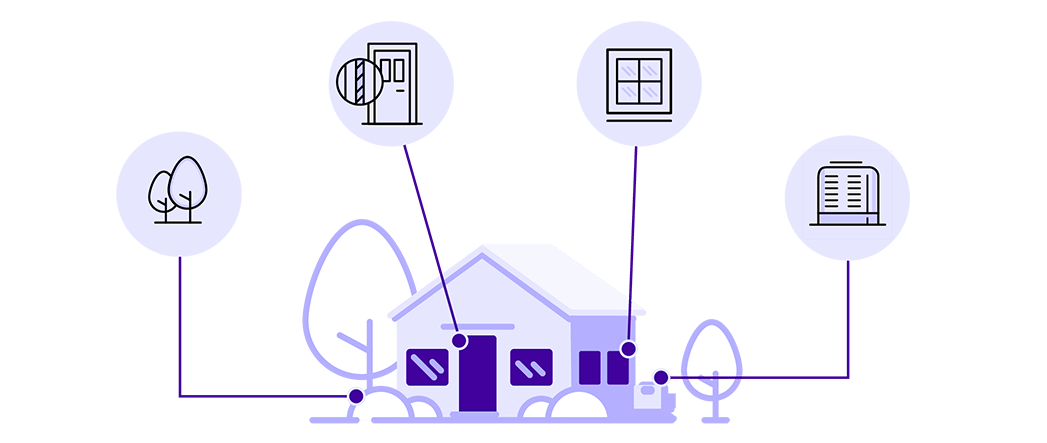Making the Most of Energy Rebates in Texas
Looking to save money while contributing to a greener future? Energy rebate programs in Texas not only offer financial incentives for energy-efficient upgrades, they also support our state’s goals of reducing demand on the grid and improving sustainability. Whether you’re a homeowner seeking to upgrade your HVAC system, a business owner wanting to install energy-efficient lighting, or simply someone interested in saving on utility bills, Texas has several energy rebate programs that are worth exploring!
Overview of Texas Energy Rebate Programs
Energy rebate programs are offered at federal, state, and local levels, and their goal is to encourage consumers to make energy-conscious decisions that ultimately reduce their carbon footprint and energy usage.
One of the primary funding sources for energy rebates is the Inflation Reduction Act (IRA), a federal initiative that includes significant allocations toward energy efficiency and renewable energy upgrades.
Additionally, Texas utility companies such as Oncor, CenterPoint Energy, and Texas-New Mexico Power offer rebates for specific energy-efficient upgrades in their service areas. Local government entities may also offer rebates, particularly for renewable energy installations like solar panels or energy-efficient windows. Not sure which utility company services your area? Check your electricity bill: your utility’s name and contact information should be printed on it. If you don’t have a bill or are unsure, you can contact the Public Utility Commission of Texas (PUCT) to find out.
Eligibility Criteria for Energy Rebates
The eligibility criteria for energy rebates vary depending on the program. Generally, homeowners and businesses must meet certain conditions related to the type of their property, the nature of the upgrades, and the location.
Property Type
Rebates are often available for both residential and commercial properties, but the incentives and eligibility may differ. For example, a rebate for residential HVAC upgrades might be different from a rebate offered to commercial buildings installing energy-efficient lighting.
Service Area
Many rebates are offered through local utility companies, so your eligibility is often based on whether you are a customer of a specific utility provider. Check with your local utility company to see if they offer energy rebate programs in your area.
Energy-Efficient Upgrades
The upgrades or purchases you make must qualify as energy-efficient according to the program guidelines. This often means that the product needs to meet or exceed specific energy performance standards, such as ENERGY STAR® certifications.
Income-Based Programs
Some rebate programs are designed to help low-income households improve their energy efficiency. These programs may offer larger incentives to make energy-efficient upgrades more affordable.
Types of Energy-Efficient Upgrades Eligible for Rebates
Energy rebate programs in Texas cover a wide range of upgrades. Some of the most common energy-efficient improvements eligible for rebates include:
HVAC Systems: Upgrading your heating, ventilation, and air conditioning (HVAC) system to a more energy-efficient model can qualify for substantial rebates, particularly if you’re replacing an older, more inefficient system
Insulation: Adding insulation to your attic or walls is a simple yet effective way to reduce energy consumption. Many programs provide rebates for insulation improvements
Windows and Doors: Installing energy-efficient windows and doors can help reduce energy loss, particularly in older homes. These upgrades are often eligible for rebates
Lighting: Switching to LED lighting is a quick and cost-effective way to reduce energy use. Some utilities offer rebates for both residential and commercial lighting upgrades
Solar Panels: Rebates for installing solar panels can significantly offset the initial investment in renewable energy. Many local utilities in Texas offer rebates specifically for solar energy systems
Water Heaters: Energy-efficient water heaters, especially heat pump water heaters, are another common upgrade eligible for rebates.

How to Apply for Rebates
While energy rebates offer real financial benefits, the application process can sometimes be cumbersome. Gathering documentation, meeting eligibility requirements, and navigating multiple programs can be time-consuming. However, most utility companies offer customer support to assist with the process. Here’s a general step-by-step guide to help you navigate the application process:
Check Your Eligibility: Start by researching the specific rebate programs available in your area. This can usually be done through your utility provider’s website or by contacting them directly
Purchase Eligible Equipment: Make sure that the upgrades or purchases you’re planning to make meet the program’s energy efficiency standards. It’s a good idea to confirm eligibility before making any purchases
Complete the Application: Most rebate programs require you to submit an application either online or by mail. You will likely need to provide proof of purchase (such as receipts or invoices), product information (model numbers, energy efficiency certifications), and installation documentation
Submit Required Documentation: Along with the application form, you’ll need to provide specific documentation, including proof of purchase, manufacturer details, and any certifications that prove the energy efficiency of the product
Track Your Application: After submission, you can usually track the status of your rebate application through the utility provider’s portal or customer service line
Receive Your Rebate: If approved, you will receive your rebate in the form of a check or bill credit, depending on the program.
Rebate Availability and Deadlines
Rebate availability can fluctuate based on funding and demand. Some programs have specific deadlines, especially if they are tied to state or federal initiatives like the IRA. Local utility providers also have yearly budgets for their rebate programs, so it’s important to apply early, so you don’t miss out. Always check the program’s website or contact your utility provider to confirm deadlines and availability.
Insights into Lesser-Known or Underutilized Rebate Programs
While most people are aware of popular rebates for HVAC systems and solar panels, there are lesser-known programs that can provide significant savings. For instance, some utilities offer rebates for smart thermostats, which allow homeowners to optimize their energy usage and cut costs. Additionally, water heater rebates and insulation incentives can yield long-term savings.
Long-Term Financial Benefits of Energy Rebates
Participating in energy rebate programs offers a substantial return on investment (ROI). By making energy-efficient upgrades, you not only benefit from the immediate rebate but also enjoy long-term savings on your utility bills. Many upgrades, such as improved insulation or energy-efficient windows, pay for themselves within a few years, with ongoing savings accumulating over time. For example, an energy-efficient HVAC system can reduce your annual energy bills by up to 20%, depending on the size of your home and the system you choose.
Broader Environmental and Economic Impact of Energy Rebates in Texas
The environmental benefits of energy rebates extend beyond individual households. When a significant percentage of Texas residents take advantage of these programs, it reduces overall energy demand, which can reduce the strain on the state’s power grid – especially during peak demand seasons like summer. These programs also create jobs in the energy efficiency and renewable energy sectors, contributing to local economies.
Future of Energy Rebate Programs
As federal and state governments continue to prioritize energy efficiency and sustainability, we can expect expansions in rebate programs. The Inflation Reduction Act and other legislation are likely to bring new incentives for a wider range of energy-efficient technologies, making it even easier for Texans to save money and reduce their carbon footprint.
FAQ
How Do I Qualify for Energy Rebates?
To qualify, you must typically be a customer of the utility provider offering the rebate, and the upgrades you plan to make must meet energy efficiency standards. Income-based programs may also have additional requirements.
What Types of Upgrades or Purchases Are Eligible for Rebates?
Energy-efficient HVAC systems, insulation, windows, doors, lighting, water heaters, and solar panels are some of the common upgrades eligible for rebates.
Are There Deadlines for Applying for These Rebates?
Yes, deadlines vary by program. Some programs have annual funding that runs out, so it’s wise to apply as soon as possible.
Can Rebates Be Combined With Other Incentives?
Yes, you can often combine state, local, and federal rebates for greater savings. For example, combining a federal solar tax credit with a local solar rebate can dramatically reduce the cost of installing solar panels.
How Much Can I Save Through Energy Rebates?
The amount you can save varies by program and the specific upgrade. For instance, rebates for HVAC systems can range from $300 to over $1,000, while rebates for solar panels could save you thousands.
Tips for Combining Multiple Rebates
To maximize your savings, consider combining local utility rebates with federal incentives like the Residential Renewable Energy Tax Credit or state-specific programs. For instance, if you're installing a new HVAC system, you may qualify for a local utility rebate and a federal tax credit.




